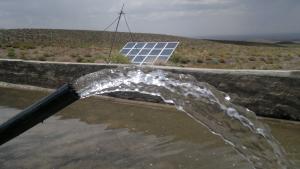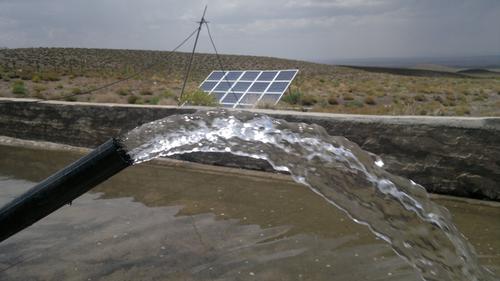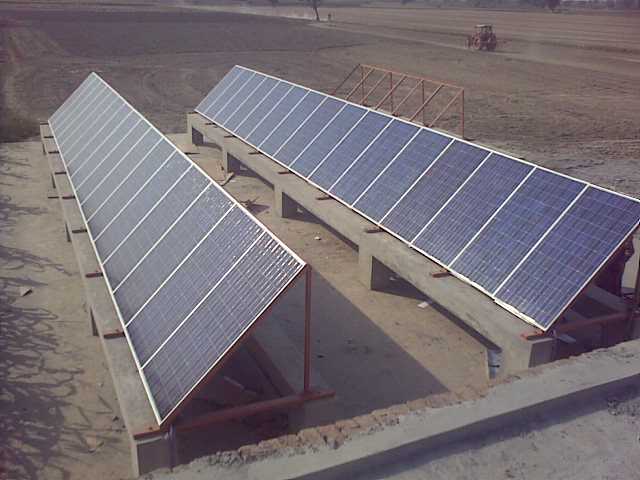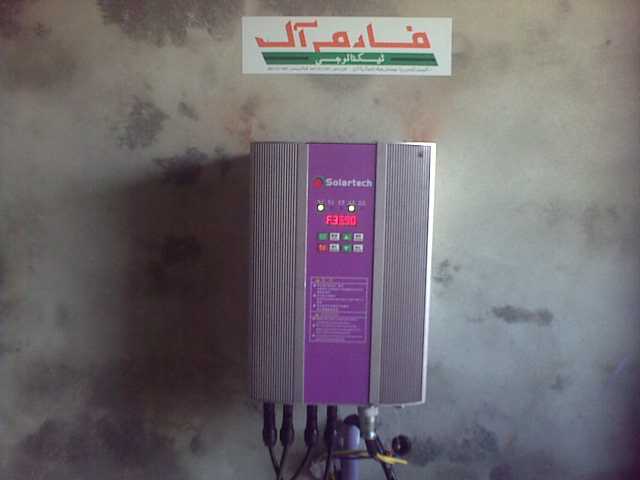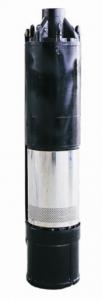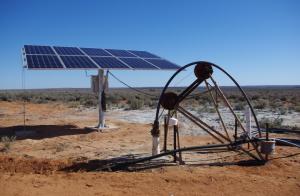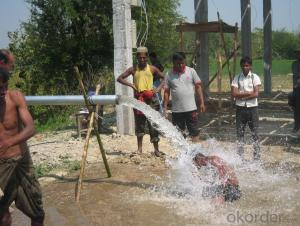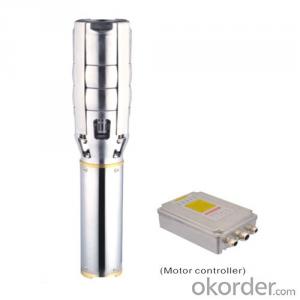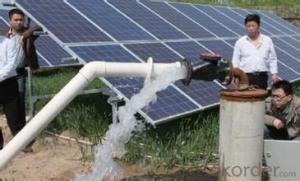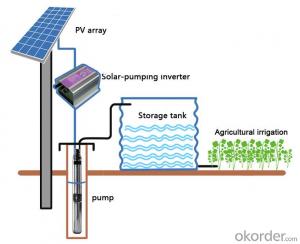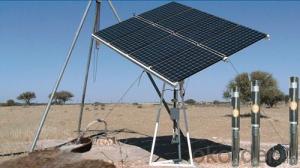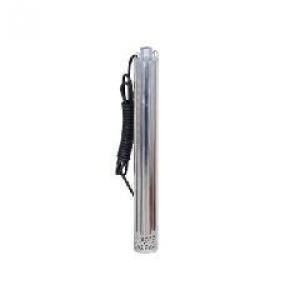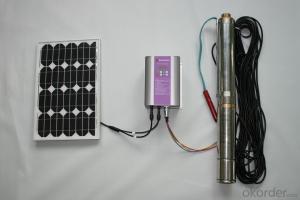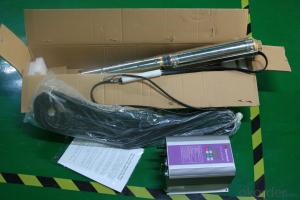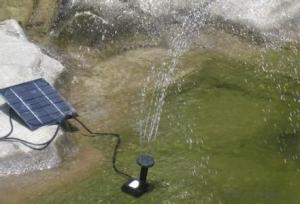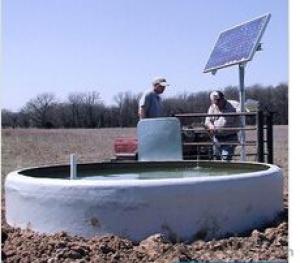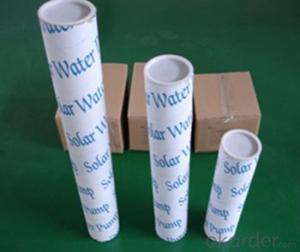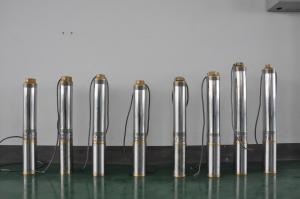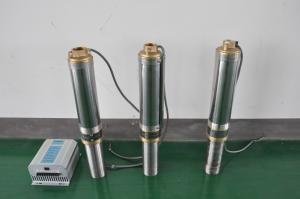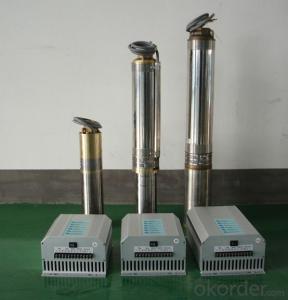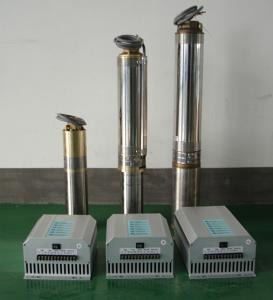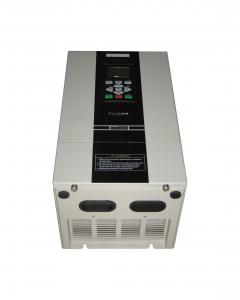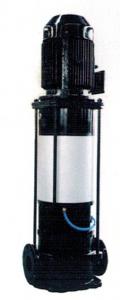AC Solar Pumping Systems
- Loading Port:
- Shekou
- Payment Terms:
- TT OR LC
- Min Order Qty:
- -
- Supply Capability:
- 100000000000000000000 pc/month
OKorder Service Pledge
OKorder Financial Service
You Might Also Like
Products
Solar Pumping System supplied by Shenzhen Solartech Renewable Energy Company(manufacturer) can be applied to daily use (ground water), agricultural irrigation, forestry irrigation, desert control, pasture animal husbandry, water supply for islands, wastewater treatment engineering, and so on. Solartech” Solar water pump System is dispensed with energy storing devices, and stores water instead of electricity. It improves the reliability of the device, at the same time, it lowers the construction and maintenance costs of the irrigation system dramatically.
In recent years, with the promotion of the utilization of new energy resources, Solar Pumping System is more and more used in municipal engineering, city centre squares, parks, tourist sites, resorts and hotels, the landscapes and fountain irrigation systems in the residential areas.
Technical Features
Optimization of Single Pump System
A single solar irrigation system consists of only one pump, a power -matched solar array and an inverter . The aim of optimization is to reduce the amount of PV modules as much as possible on the premise of filling the requirement of head and capacity. The rotational speed of pump is regulated according to the irradiation on the solar array; when the sunlight reaches its peak, the pump runs at the rated speed, and the output approaches the peak power of the solar array; when the sunlight is less abundant, the speed of pump varies bellow the range of the rated speed; when the speed as low as the capacity becomes zero, the solar pumping system stops working. So, there are big differences between solar irriation systems and traditional pumping systems in system design, and the system should be optimized according to the requirements of head, capacity, and local conditions of sunlight.
•Determine the optimal average daily operating time and the range of speed governing.
•Choose the optimal head and capacity of the pump.
•Determine the maximum power of PV modules, the best working voltage and method of connection.
Optimization of Multi-pump Systems:
There are several pumps in a multi-pump system. The pumps can be driven either by only one high-power inverter, or by several matching inverters. In the case of large capacity demand, the operation of the multi-pump system is more flexible. By switching solar arrays and pumps, all of the pumps run in MPPT mode when the sunlight is abundant, while some pumps will be shut down and all solar arrays supply power intensively for the rest running pumps when irradiation is weak. Based on the optimization of single pump system, the range of speed can be further optimized, and the photovoltaic(PV) pumping system always works with high efficiency.
Product Specifications
Model | Rated Power ( kW ) | Rated Voltage ( V ) | Head ( M ) | Daily Flow ( ㎥/ D ) |
PS370 | 0.37 | 220 | 20-47 | 20-1 |
PS550 | 0.55 | 220 | 15-70 | 40-1 |
PS750 | 0.75 | 220 | 6-81 | 100-1 |
PS1100 | 1.1 | 220 | 8-93 | 100-1 |
PS1500 | 1.5 | 220 | 7-128 | 130-1 |
PS2200 | 2.2 | 380 | 12-163 | 130-1 |
PS3000 | 3 | 380 | 9-187 | 250-10 |
PS4000 | 4 | 380 | 6-225 | 500-10 |
PS5500 | 5.5 | 380 | 10-172 | 500-20 |
PS7500 | 7.5 | 380 | 15-237 | 500-20 |
PS9200 | 9.2 | 380 | 20-140 | 500-40 |
PS11000 | 11 | 380 | 23-159 | 500-40 |
PS13000 | 13 | 380 | 27-189 | 500-40 |
PS15000 | 15 | 380 | 31-208 | 500-40 |
PS18500 | 18.5 | 380 | 39-143 | 500-100 |
PS22000 | 22 | 380 | 25-86 | 700-210 |
PS26000 | 26 | 380 | 30-105 | 700-210 |
PS30000 | 30 | 380 | 35-125 | 700-210 |
PS37000 | 37 | 380 | 40-150 | 700-210 |
PS45000 | 45 | 380 | 50-180 | 700-210 |
PS55000 | 55 | 380 | 65-200 | 700-210 |
- Q: How does a solar pump handle water with high levels of bacteria?
- A solar pump alone does not address the issue of water with high levels of bacteria. However, solar pumps can be combined with appropriate water treatment methods, such as disinfection or filtration systems, to effectively handle water with high levels of bacteria.
- Q: How does the angle and orientation of solar panels affect the performance of a solar pump?
- The angle and orientation of solar panels have a significant impact on the performance of a solar pump. The angle refers to the tilt of the solar panels, while the orientation refers to the direction they face. The angle at which solar panels are installed affects their efficiency by determining the amount of sunlight they receive. Solar panels work by converting sunlight into electricity, and the angle at which they are tilted determines the amount of sunlight they can capture. The optimal angle depends on the geographical location of the solar pump. For example, in regions near the equator, a flat or low tilt angle is preferable to maximize the exposure to the sun throughout the year. In contrast, in higher latitudes, a steeper tilt angle is recommended to compensate for the lower intensity of sunlight. The orientation of solar panels refers to the direction they face, typically either towards the south or north depending on the hemisphere. In the Northern Hemisphere, for instance, solar panels should face south to capture the maximum amount of sunlight. By facing south, solar panels can receive sunlight for the longest duration during the day. Similarly, in the Southern Hemisphere, solar panels should face north for optimal performance. The angle and orientation of solar panels also impact the efficiency of a solar pump by influencing the angle of incidence, which is the angle at which sunlight strikes the surface of the panels. When sunlight strikes the panels at a perpendicular angle, it is most efficiently converted into electricity. If the angle of incidence is too high or too low, the efficiency of the solar panels decreases. Adjusting the tilt angle and orientation helps to optimize the angle of incidence, thus maximizing the energy output of the solar pump. Overall, the angle and orientation of solar panels are crucial factors in determining the performance of a solar pump. By adjusting these parameters according to the geographical location, it is possible to optimize the capture of sunlight and maximize the efficiency of the solar pump.
- Q: Are there any limitations to the size of a solar pump system?
- Indeed, the size of a solar pump system is subject to certain constraints. The primary restriction pertains to the provision of sufficient space for the installation of solar panels. In order to generate electricity, solar panels necessitate an adequate amount of sunlight exposure. Consequently, the dimensions of the solar pump system will be contingent upon the available space allocated for the panels' installation. Moreover, the system's size may also be constrained by the capacity of the solar pump itself. More sizable capacity solar pumps necessitate a greater amount of power, thereby requiring larger solar panels and an overall larger system. Lastly, the budget may impose limitations as well, since larger solar pump systems generally incur higher costs for installation and maintenance.
- Q: How do I ensure the longevity of the solar panels used in a solar pump system?
- To ensure the longevity of the solar panels used in a solar pump system, it is important to follow a few key practices. Firstly, regular maintenance is crucial, including cleaning the panels to remove any dirt or debris that may accumulate. Additionally, inspecting the panels for any signs of damage or wear and tear is important, and addressing any issues promptly can help prevent further damage. It is also essential to ensure that the panels are installed in an optimal location where they receive maximum sunlight exposure and are not obstructed by shading. Lastly, protecting the panels from extreme weather conditions such as hail or heavy snowfall can also help prolong their lifespan.
- Q: How do I choose the right size of solar pump for my needs?
- Choosing the right size of solar pump for your needs requires considering factors such as the water flow required, the depth and distance the pump needs to lift water, and the power output of the solar panels. It is important to calculate the total dynamic head (TDH) and select a pump that can meet that TDH, along with considering the desired water flow rate. Additionally, ensure that the power output of the solar panels is sufficient to run the pump effectively. Consulting with a solar pump expert or supplier can also provide valuable guidance in selecting the appropriate size for your specific needs.
- Q: Can solar pumps be used in both shallow and deep wells?
- Yes, solar pumps can be used in both shallow and deep wells. The efficiency and effectiveness of the solar pump will depend on the specific requirements of the well, including its depth and the volume of water needed. However, solar pumps have the flexibility to be used in a wide range of well depths, making them a versatile and sustainable option for various water pumping needs.
- Q: What is the maximum flow rate of a solar pump?
- The flow rate of a solar pump is influenced by multiple factors, including the pump's size and capacity, the power output of the solar panel, the intensity of sunlight, and the efficiency of the pumping system. Typically, solar pumps can achieve flow rates anywhere from a few gallons per hour to several thousand gallons per hour. Nevertheless, it should be recognized that sustaining or practically utilizing the maximum flow rate may not always be feasible due to the need for optimal conditions and abundant solar power. To ascertain the maximum flow rate of a particular solar pump model, it is advisable to refer to the manufacturer's specifications and guidelines.
- Q: Are there any limitations on the temperature range that solar pumps can operate in?
- Yes, there are certain limitations on the temperature range in which solar pumps can operate. Solar pumps are designed to function optimally within a specific temperature range, typically between -40°C to 60°C (-40°F to 140°F). Extreme temperatures beyond this range can affect the performance and efficiency of the solar pump, potentially leading to reduced output or even damage to its components. Therefore, it is essential to consider the temperature range of the location before installing a solar pump to ensure its successful operation.
- Q: Can solar pumps be used for water supply in remote agricultural or farming communities?
- Yes, solar pumps can be used for water supply in remote agricultural or farming communities. They are a reliable and sustainable solution as they use solar energy to power the pumps, eliminating the need for electricity or fuel. This makes them suitable for areas with limited or no access to the power grid. Solar pumps are also cost-effective in the long run, as they require minimal maintenance and have no operational costs. Additionally, they can provide a consistent and sufficient water supply, crucial for irrigation and livestock needs in remote farming communities.
- Q: Can a solar pump be used for water supply in a school or educational institution?
- Yes, a solar pump can definitely be used for water supply in a school or educational institution. Solar pumps are an eco-friendly and cost-effective solution that can provide a reliable source of water for various purposes such as drinking, sanitation, and irrigation. They can be easily installed and operated, requiring minimal maintenance and no electricity costs. Additionally, using a solar pump aligns with the principles of sustainability and renewable energy, which can be taught and promoted within an educational setting.
Send your message to us
AC Solar Pumping Systems
- Loading Port:
- Shekou
- Payment Terms:
- TT OR LC
- Min Order Qty:
- -
- Supply Capability:
- 100000000000000000000 pc/month
OKorder Service Pledge
OKorder Financial Service
Similar products
Hot products
Hot Searches
Related keywords
